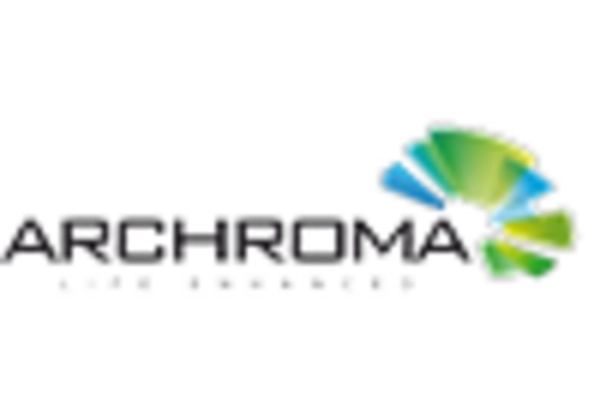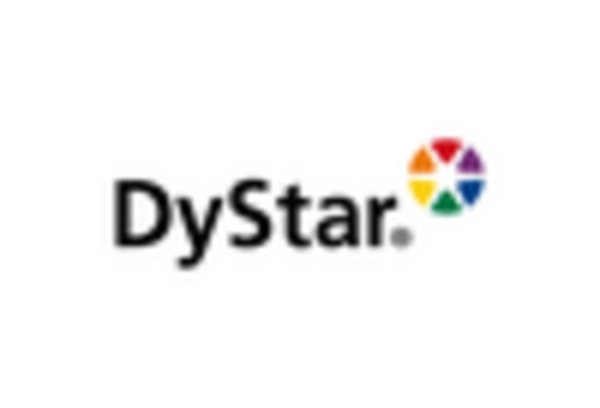Expansion of the Fashion Industry
The textile dyes market in North America is significantly influenced by the expansion of the fashion industry, which is characterized by rapid changes in consumer preferences and trends. As the fashion sector continues to grow, the demand for diverse and vibrant colors in textiles is increasing. This has led to a surge in the use of synthetic dyes, which offer a wider range of color options and better colorfastness. The textile dyes market is projected to reach a valuation of over $3 billion by 2026, driven by this expansion. Additionally, the rise of fast fashion has further accelerated the need for quick and efficient dyeing processes, prompting manufacturers to innovate and streamline their operations to meet the growing demand.
Growing Demand for Eco-Friendly Dyes
The textile dyes market in North America is experiencing a notable shift towards eco-friendly dyes, driven by increasing consumer awareness regarding environmental sustainability. As consumers become more conscious of the ecological impact of their purchases, brands are compelled to adopt sustainable practices. This trend is reflected in the market, where the demand for natural and biodegradable dyes is projected to grow at a CAGR of approximately 8% over the next five years. The textile dyes market is adapting by investing in research and development to create innovative, environmentally friendly dyeing processes. Furthermore, regulatory pressures are also influencing manufacturers to reduce harmful chemical usage, thereby enhancing the appeal of eco-friendly dyes in the market.
Rising Consumer Preference for Customization
The textile dyes market in North America is witnessing a rising consumer preference for customization in textile products. As consumers increasingly seek unique and personalized items, manufacturers are responding by offering customized dyeing options. This trend is particularly evident in the apparel sector, where bespoke clothing is gaining popularity. The textile dyes market is adapting to this demand by providing a wider array of color choices and dyeing techniques that cater to individual preferences. This shift not only enhances customer satisfaction but also drives sales, as personalized products often command higher prices. Consequently, the market is likely to see a growth trajectory fueled by this trend towards customization.
Technological Innovations in Dyeing Processes
Technological advancements are playing a crucial role in shaping the textile dyes market in North America. Innovations such as digital printing and advanced dyeing techniques are enhancing efficiency and reducing waste in the dyeing process. For instance, digital textile printing allows for precise color application, minimizing excess dye usage and water consumption. The textile dyes market is likely to benefit from these innovations, as they not only improve production efficiency but also align with sustainability goals. Furthermore, the integration of automation and artificial intelligence in dyeing processes is expected to optimize operations, reduce costs, and enhance product quality, thereby attracting more players to the market.
Increased Focus on Health and Safety Regulations
The textile dyes market in North America is significantly impacted by the increased focus on health and safety regulations. Regulatory bodies are imposing stricter guidelines on the use of hazardous chemicals in dye formulations, prompting manufacturers to reformulate their products. This shift is leading to a growing demand for non-toxic and safer dye alternatives, which is reshaping the textile dyes market. Companies are investing in compliance measures and developing safer dyeing processes to meet these regulations. As a result, the market is likely to experience a transition towards safer, more sustainable dye options, which could enhance consumer trust and brand loyalty.

















Leave a Comment